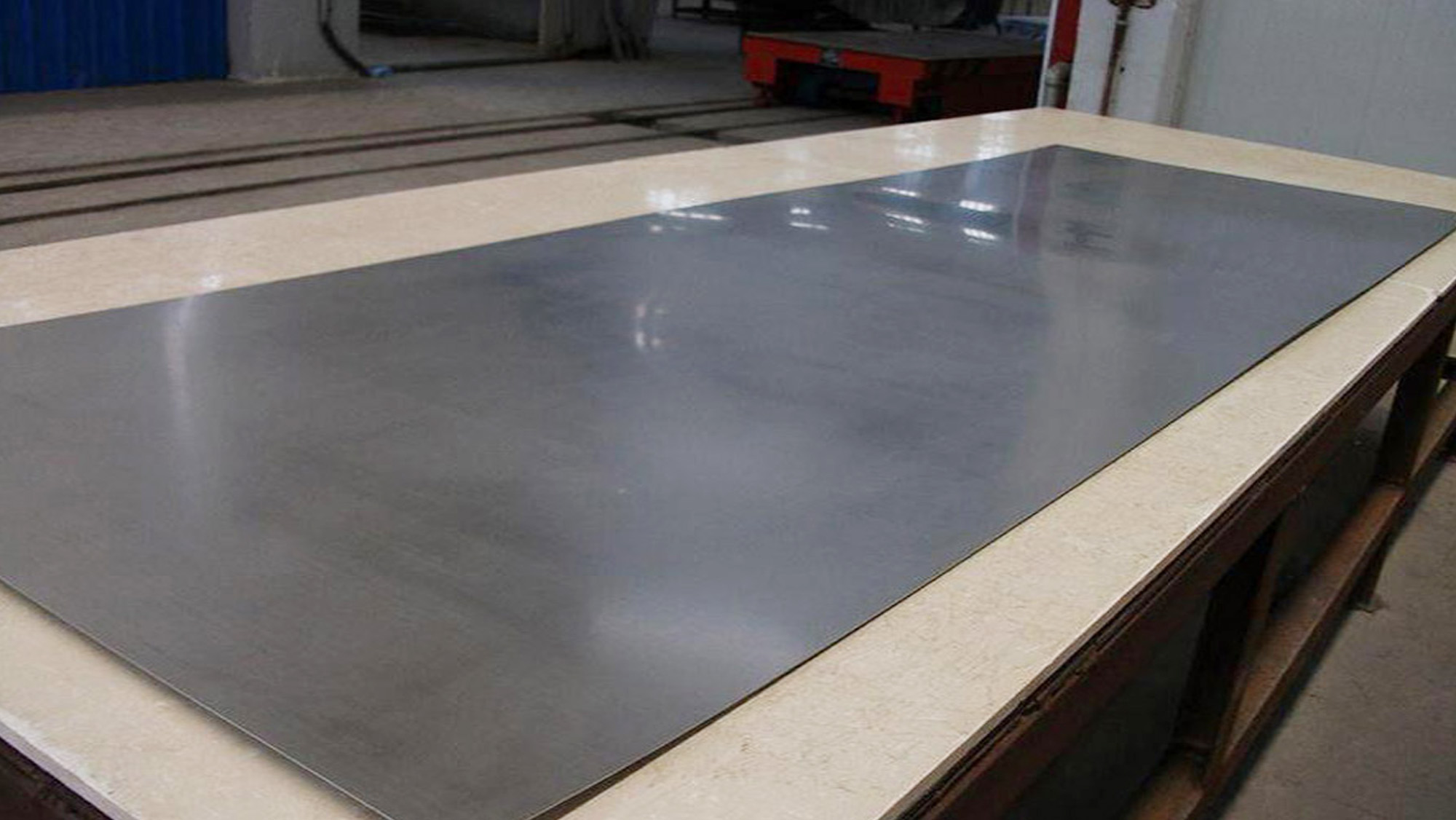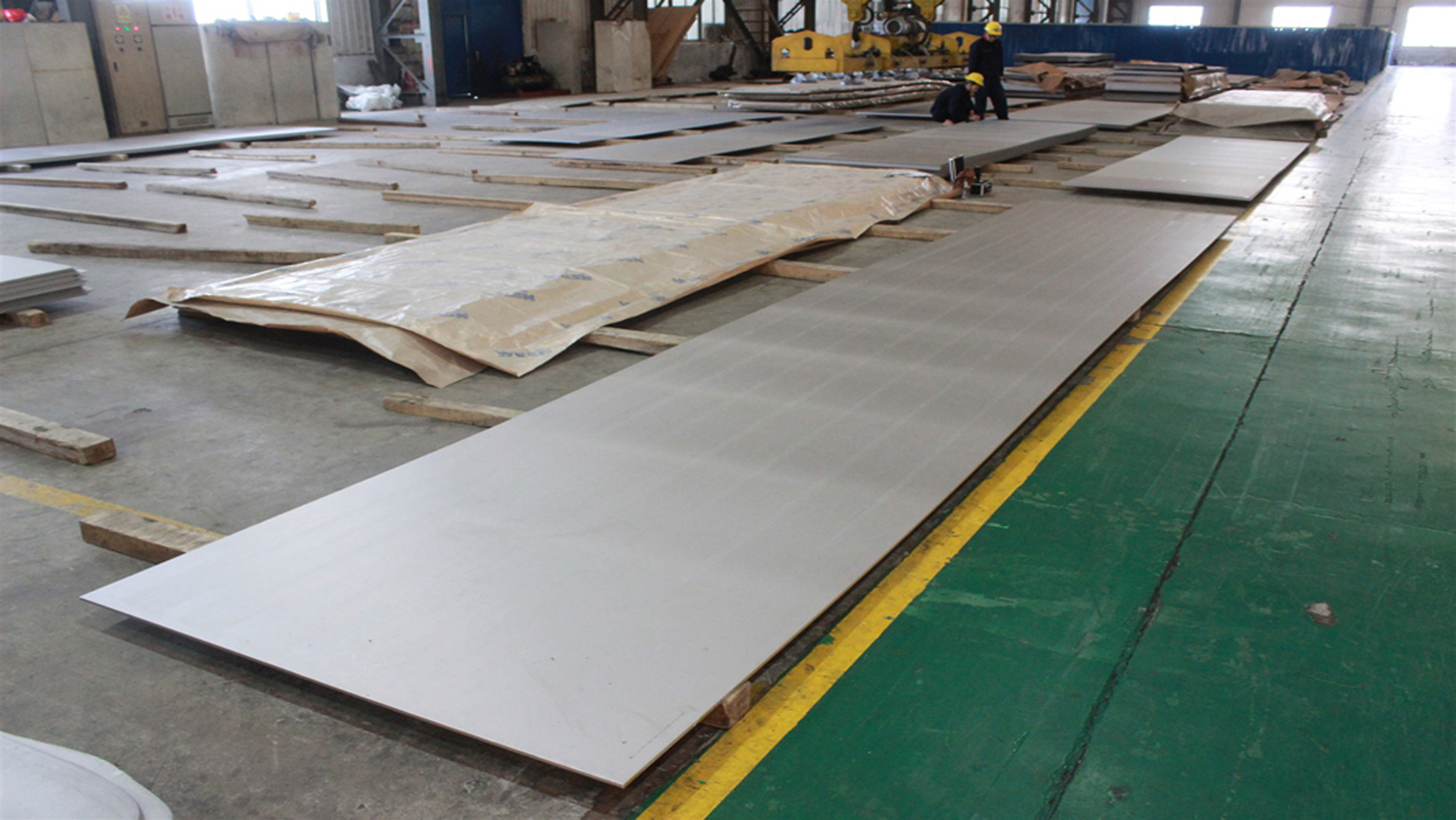

Baoji Zhongyang Metal introduces the production and processing technology of titanium alloy plates and titanium belts
Production of titanium and titanium alloy plate, sheet and strip
The process of processing titanium and titanium alloys into single-piece or coiled materials with rectangular cross-sections through smelting, ingot casting, flat-roll rolling, heat treatment, and finishing.
The industrial production of titanium alloy strips in the world started from the beginning of the titanium ta generation in the 20th century. It can now produce strips with a coil weight of 4-5t and thick plates with a width of 4.2m. China started titanium plate production in the late 1950s, and built a larger titanium processing plant in the mid-1960s, forming a production system. The products have been serialized and can produce plates with a thickness of 0.3 to 30 mm and a thickness of 0.01 ~2.0mm strip.
The simple production process flow of titanium alloy sheet and strip is shown in the figure.

Melting and ingot Titanium has a high melting point and active chemical properties, and it is easy to interact with air and refractory materials at high temperatures or in a molten state. Titanium and titanium alloys are usually cast in water-cooled or liquid metal-cooled copper crucibles under vacuum or inert gas atmosphere. At present, the most widely used in the production of titanium ingots is vacuum consumable electrode arc furnace melting.
After mixing a certain proportion of sponge titanium, return material and alloy elements uniformly, press it into a block (called an electrode block) on a hydraulic press, and then use a plasma welding method to weld the electrode block into an electrode (rod), and consume the electrode in a vacuum It is remelted into ingots in the electric arc furnace. In order to ensure the uniform composition of the ingot, the particle size of the added alloy elements, return materials and sponge titanium are all controlled within a certain range, and three vacuum remelts are taken. Titanium alloy ingots smelted on an industrial scale are generally 3 to 6 tons, and large ingots are up to 15 tons. Usually the ingot melted by vacuum consumable electrode arc furnace is round. In recent years, other methods have also been adopted, such as plasma smelting, electron beam smelting, shell smelting and electroslag smelting, etc., to obtain titanium alloy flat ingots and square ingots. For example, Japan uses a plasma beam furnace to smelt slabs weighing up to 3t, which are directly used for rolling strips.

Forging is the main method to break the as-cast crystalline structure, improve material properties and obtain slabs of a certain size and shape. In the heating process before slab forging, the titanium alloy easily reacts strongly with air to form oxide scales and getter layers, reducing the plasticity and other properties of the material. Therefore, induction heating or heating in a chamber-shaped resistance furnace with good airtightness is often used. When using a flame furnace for heating, the furnace should be kept in a slightly oxidizing atmosphere, or a protective layer can be coated on the surface of the ingot or heated in an inert gas. Titanium alloys have low thermal conductivity. When heating large-section or high-alloyed ingots, in order to prevent the ingots from cracking caused by thermal stress, the low-temperature slow-speed, high-temperature fast segmented heating method is usually used. Controlling the ingot billet heating and final forging temperature and forging deformation is an important guarantee for obtaining high-quality titanium slabs. See Table 1 for the forging process system of several main titanium alloy slabs.
Table 1 Several titanium alloy slab forging process systems
| Alloy | Heating temperature/℃ | Final forging temperature/℃ |
| Industrial pure titanium Ti-5Al-2.5Sn Ti-6Al一4V Ti-15V-3Cr-3Sn-3AI | 900~1020 1050~1200 960~1150 960~1150 | ≥750 ≥850 ≥800 ≥800 |
Forging of titanium alloy slabs generally uses hydraulic presses and forging hammers. In order to ensure the smooth progress of the subsequent rolling process and the surface quality of the plate, the forged slabs and ingots should be machined to strip surface cracks and getter layers up to a depth of 3-4 mm.
Rolling Compared with aluminum, copper, and steel, titanium alloy sheet and strip are characterized by large deformation resistance, low plasticity, and easy oxidation at high temperatures, so processing is difficult. Rolling includes hot rolling, warm rolling and cold rolling. Hot rolling is an important process in the production process of titanium strip. When formulating the hot rolling process system of titanium alloy sheet and strip, the influence of grain structure on mechanical properties should also be considered. In order to reduce the formation of the getter layer and scale during heating, pure titanium and low-alloyed titanium alloys use a lower heating temperature, and in the case of heat penetration, shorten the holding time as much as possible. However, lowering the temperature will sharply increase the deformation resistance during rolling, and the plasticity will also decrease, which is often not allowed for highly alloyed titanium alloys. In order to obtain a uniform fine grain structure and sheet and strip with good performance, multiple hot rolling, cladding stacking and warm rolling are often used in production to ensure that the sheet and strip have enough in the α or α+β phase region Deformation. Therefore, it is very important to determine a reasonable hot rolling process system. See Table 2 for several titanium alloy hot rolling process systems.
Table 2 Several titanium alloy hot rolling process systems
| Alloy | Heating temperature/℃ | Final forging temperature/℃ |
| Industrial pure titanium Ti-5Al-2.5Sn Ti-6Al一4V Ti-15V-3Cr-3Sn-3AI | 900~1020 1050~1200 960~1150 960~1150 | ≥750 ≥850 ≥800 ≥800 |
For the hot rolling of titanium sheet and strip, a reversible four-roll hot rolling mill with a coiler, a four-roll reversible furnace coil rolling mill and a multi-stand four-roll continuous hot rolling mill can be used. Compared with the hot continuous rolling unit, the reversible four-roll hot rolling mill with coiler requires less investment, occupies a small area, and can roll hot rolled coils with good quality and a thickness of 3 to 6 mm. Production equipment for various varieties of titanium alloy strips. Generally, the hot rolling method is used to produce various titanium alloy plates with a thickness greater than 3 mm.
Titanium alloy plates with a thickness of less than 2mm are usually produced by cold rolling. Compared with hot rolling, cold rolled sheet has the advantages of good surface quality, high dimensional accuracy, and small dimensional tolerances. The cold-rolled sheet can be produced by the belt method, however, the cold-rolled sheet of titanium alloy is mostly produced by the block method. Cold rolling is usually carried out on a four-roller reversible cold rolling mill, or a multi-stand tandem cold rolling mill can also be used. Plates and strips with a thickness of less than 0.5 mm are rolled on a 20-roll mill. In order to improve product quality, these rolling mills should use computer control. In order to obtain titanium alloy sheets and strips with different thicknesses, the cold rolling, intermediate annealing and finishing steps can be repeated many times. When producing high-alloyed titanium alloy strip, in order to improve the plasticity of the material and reduce the deformation resistance during rolling, warm rolling can also be performed in the range of 600 to 850°C.
Annealing Heats the titanium alloy sheet and strip to a certain temperature for a sufficient time, and then cools at a suitable rate. The annealing of titanium alloy sheet and strip includes two kinds of intermediate annealing and finished annealing. The purpose of intermediate annealing is to eliminate work hardening and restore the plasticity and deformability of the titanium alloy to facilitate continued rolling. Finished product annealing is to obtain products with certain structure and performance. For α and α+β type alloys, annealing can be carried out by holding in the temperature range of α and α+β phases and cooling at a slower cooling rate to obtain a uniform and fine recrystallized structure to ensure that the material has good performance. For β-type titanium alloys, after annealing in a certain temperature range of β-phase region, they are usually cooled by a faster cooling method to ensure the high plasticity of B-phase grain structure to meet the subsequent further processing and use. Thicker sheets and strips can be annealed in air; thinner sheets and strips are often annealed under vacuum or inert gas protection. Several titanium alloy annealing process systems are shown in Table 3. The mechanical properties of several titanium alloy sheets and strips after rolling and annealing are shown in Table 4.
Finishing includes alkaline washing, pickling, straightening, shearing, sand blasting and sanding. When the titanium alloy plate is alkali washed in sodium hydroxide melt and acid solution in hydrofluoric acid aqueous solution, it is necessary to add an appropriate amount of sodium nitrate and nitric acid as oxidants to prevent the titanium alloy from absorbing hydrogen. Titanium alloys have a high yield-strength ratio, a small elastic modulus, and a large springback. Therefore, straightening and flattening are more difficult. Thermal straightening and thermal smoothing or vacuum creep straightening can be used. Because titanium alloys are sensitive to notches, surface defects such as cracks and getter layers produced in the production process should be cleaned up in time by grinding and other methods to prevent the defects from further deepening during the deformation process. Therefore, the finishing process is very important in the production of titanium alloy sheet and strip, which is to ensure that the surface quality, geometry and organizational performance of the product meet the technical standards.